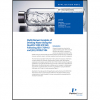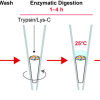Agilent Technologies Inc. and Seahorse Bioscience today announced they have signed a definitive agreement under which Agilent will acquire Seahorse Bioscience, who make instruments and assay kits for measuring cell metabolism and bioenergetics.
Exploration into cell metabolism is rapidly accelerating as the links between mitochondrial function and disease are increasingly revealed. Seahorse Bioscience’s technology enables researchers to better understand cell health, function and signalling, and how the cell may be impacted by the introduction of a specific drug, by providing real-time kinetics to unlock essential cellular bioenergetics data.
“Seahorse Bioscience’s unique technology is the perfect complement to Agilent’s market-leading separations and mass spectrometry solutions, in particular for metabolomics research and disease research in pharma”, said Patrick Kaltenbach, president of Agilent’s Life Sciences and Applied Markets Group. “The combination of these two platforms gives scientists a more comprehensive and faster path to researching the most challenging diseases affecting mankind. Seahorse’s team and technology are an ideal fit for Agilent and for our customers, and we look forward to bringing them on board.”
Agilent is acquiring Seahorse Bioscience for $235 million in cash. The acquisition is expected to be completed by 1 November 2015 subject to local laws and regulations and customary closing conditions.




![Targeted proton transfer charge reduction (tPTCR) nano-DESI mass spectrometry imaging of liver tissue from orally dosed rat (Animal 3). a) optical image of a blood vessel within liver tissue. b) Composite ion image of charge-reduced haeme-bound α-globin (7+ and 6+ charge states; m/z 2259.9 and m/z 2636.3 respectively, red) and the charged-reduced [FABP+bezafibrate] complex (7+ and 6+ charge states; m/z 2097.5 and m/z 2446.9 respectively, blue). c) Ion image composed from charge-reduced haeme-bound α-globin (7+ and 6+ charge states) showing abundance in blood vessels. d) Ion image composed from charge-reduced [FABP+bezafibrate] complex (7+ and 6+ charge states) showing abundance in bulk tissue and absence in the blood vessel. Reproduced from https://doi.org/10.1002/ange.202202075 under a CC BY licence. Light and mass spectromert imaging of tissue samples](/sites/default/files/styles/thumbnail/public/news/MSI%20drug-protein%20complex-w.jpg?itok=CBNIjyYl)




